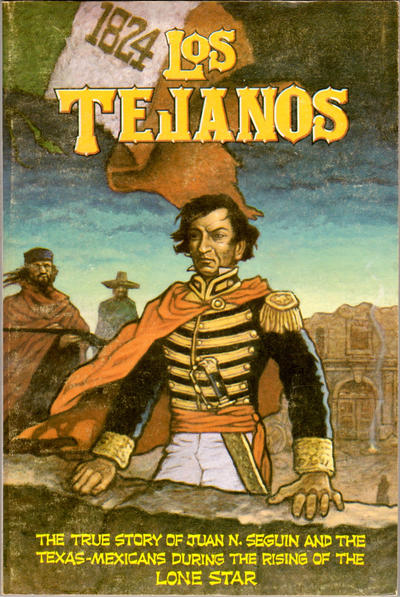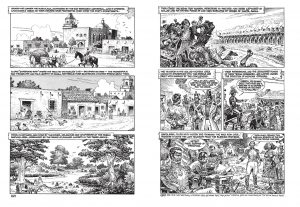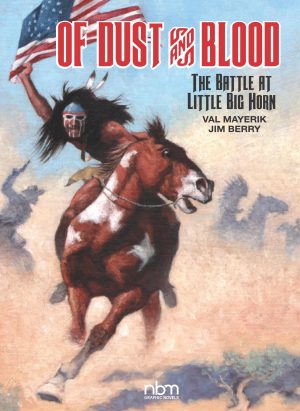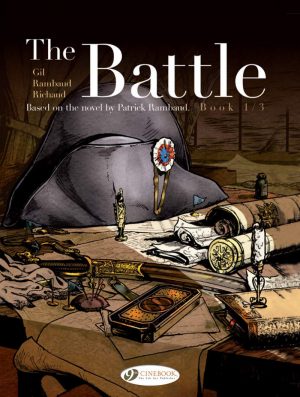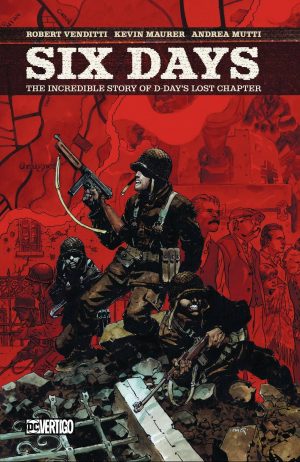Review by Ian Keogh
Long ago Fantagraphics were best known for the USA’s most erudite publication about comics, The Comics Journal, which deplored the prevalent mediocrity in the comics industry while extolling the form. In 1982 the editors began to issue comics they believed worthwhile, reprinting the first self-published issue of Love and Rockets, and their earliest graphic novels, among them Los Tejanos.
In 2012 Fantagraphics reprinted Los Tejanos with an introduction noting this version sold just 4000 copies over several years, earning Jackson slightly less than $2500. Just look at the beauty of Jackson’s pen and ink versions of San Antonio as it was in 1835 when still known as Bexar (sample art left), and ask how this can possibly have been the case. Texas was then part of Mexico, and over the early pages Jackson uses Bexar as an example of how time and again the area had suffered, whether put to the sword by official forces, raided by the Comanche or briefly occupied by revolutionaries. American incomers are viewed with suspicion, a larger population than the ruling Mexicans, accusations of treason fly frequently and there’s widespread resentment at the lack of services provided by the Mexican government.
Jackson uses the first person narration of Erasmo Seguin to set the scene and map out the political tensions, every page beautifully and precisely drawn, before moving to the revolution that briefly established Texas as a free territory before it elected to join the USA. It’s most prominently the story of Erasmo’s son Juan. Jackson feels Juan Seguin’s importance at the time has been marginalised by history, and there was no biography when Jackson produced Los Tejanos, piecing together his story from his own research, much from unpublished sources. Seguin is pivotal in ensuring freedom for Texas, yet rapidly ousted by Americans who make no distinction between former Mexican rulers and Mexican freedom fighters.
Personalised episodic chapters encompass important events such as the seige of the Alamo, and the story is peppered with names familiar to history students, now better known as cities. Moments of fascination occur in passing, such as Jim Bowie’s background covered in two detailed panels, or the origin of the term “cow boy”, but Jackson ensures social details accompany the momentous history. And page after page is composed of meticulously drawn panels, each enshrining a moment.
Jackson’s fascination and sincerity is obvious, but Los Tejanos is in places bogged down in detail, and choosing to present his history via dialogue can result in the audience being addressed rather than cast members. Conversely, dialogue is a way of bringing history to life, giving feeling to dry fact, and often enhances the emotional resonance.
Los Tejanos is a very dense read, into which Jackson deftly compacts so much information, and a tragic story. Seguin is ultimately a man who lives past his purpose as others see it, popular enough to rouse an army, yet a thorn in the side of subsequent politicians and money men far less scrupulous than he is. He’s eventually forced into a situation designed to shred his reputation, and what happens in Texas is shameful greed justified by bigotry. Seguin can’t have asked for a more definitive and gloriously drawn restoration of his honour than Jackson provides.
